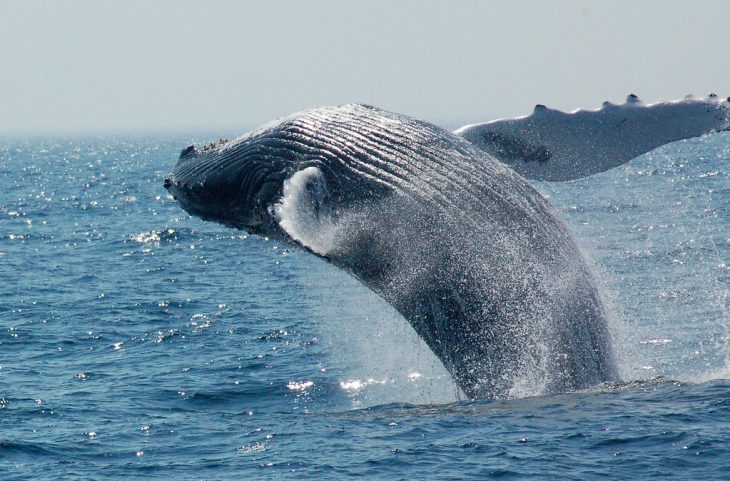
Whales are the largest animals on earth. Some are as big as basketball courts, while some can easily fit in your house. These aquatic mammals, however, are much more than just their massive sizes. Different types of whales have different appearances, habitats, behaviors, and contributions to the planet.
If you’re interested in learning more about these hefty animals, then keep on reading. From their characteristics to their diets, this guide has everything you need to know about the different types of whales!
What is a whale?
People often ask, “Is a whale a fish?” This is no surprise as whales share many similarities with most fishes. Like most fishes, whales have fins, and they live underwater. Despite these characteristics, however, whales aren’t fish. Whales are mammals.
Whales are aquatic mammals belonging to the order Cetacea. Like most mammals, they are warm-blooded creatures who give birth to live young. They have lungs instead of gills, so they can’t breathe underwater. They breathe through a blowhole on top of their heads, which is why they often swim near the surface.
While it varies per type, most whales travel alone. A mother and its baby whale or “calf” also often live together until the calf matures. Some types of whales also travel in small groups called “pods”.
What are the different types of whales?
There are several types of whales, but you can group them into two major categories: toothed whales and baleen whales.
Toothed Whales
As its name implies, a toothed whale refers to whales with teeth. They are also known as “odontocetes”. Some toothed whales chew their prey, or just simply swallow them whole.
They only have one blowhole on top of their heads, and they range from 4.5 to 66 ft. Over 70 species of toothed whales exist, including dolphins and sperm whales.
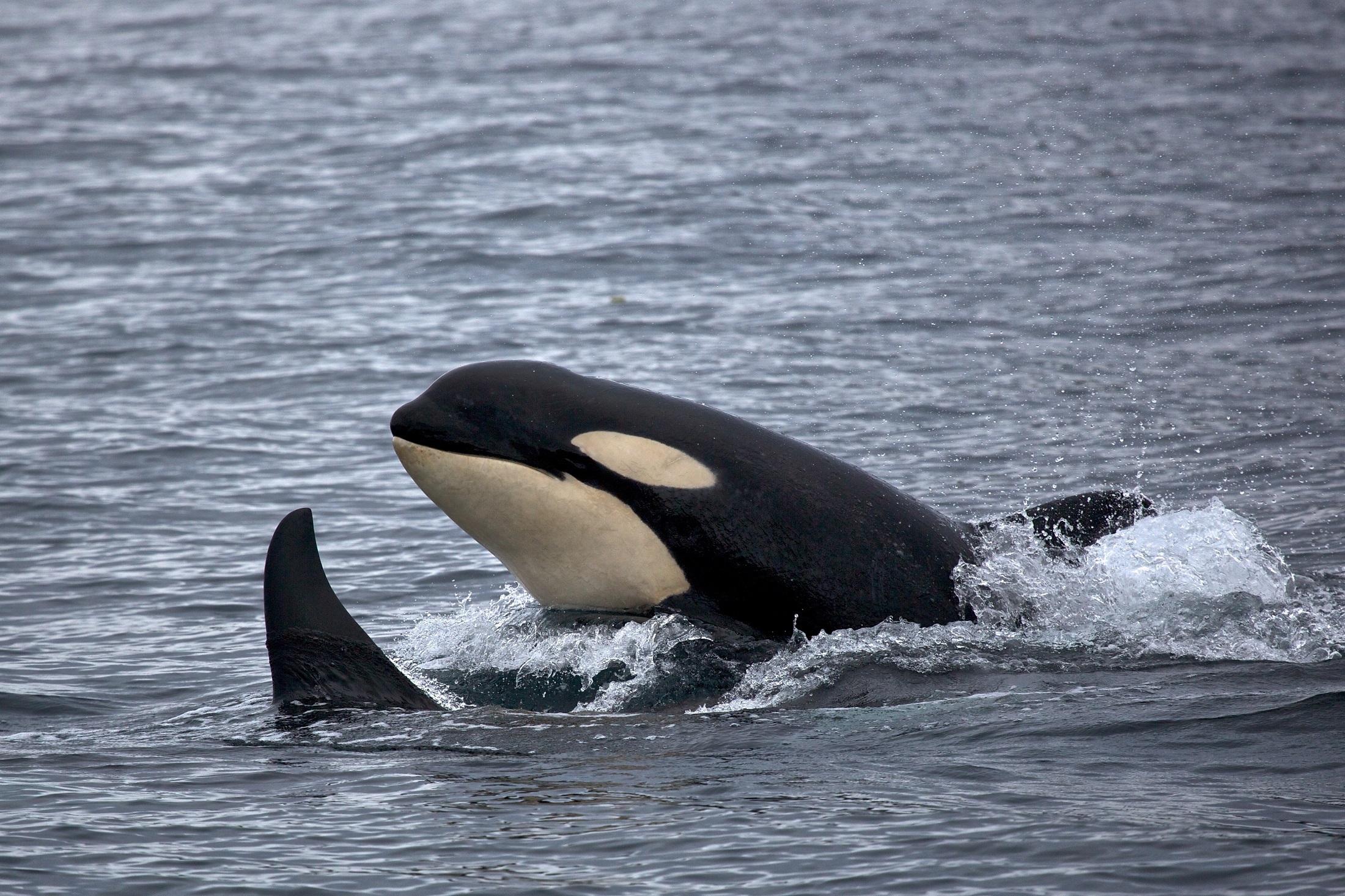
Baleen Whales
Baleen whales have “baleen” instead of teeth. Some types of whales have a type of tissue on their upper jaws. This tissue forms a series of parallel stripes on each side of the whale’s palate called baleen plates or sheets.
Underwater, the whale opens its mouth to take in water. It pushes the water out and the baleen acts as a filter that leaves krill, plankton, and other small fish inside. Instead of actively hunting fish, this is how baleen whales feed.
Baleen whales also have two blowholes on top of their heads. Another way to distinguish baleen whales from toothed whales is their size. Baleen whales are much larger than toothed whales. They can range from 20 to 102 ft. long.
Are dolphins whales?
Yes, dolphins are whales. However, while all dolphins are whales, not all whales are dolphins. Dolphins are part of the order Cetacea, the same order as whales. Because of this, many people consider dolphins to be smaller types of whales.
Like whales, dolphins are aquatic mammals with front flippers, a tail with a fin, and front flippers. They also have streamlined bodies with little to no hair. Dolphins belong to the subgroup of toothed whales because they have teeth and only one blowhole.
What are the different types of Baleen whales?
Humpback Whale
Scientific Name: Megaptera novaeangliae
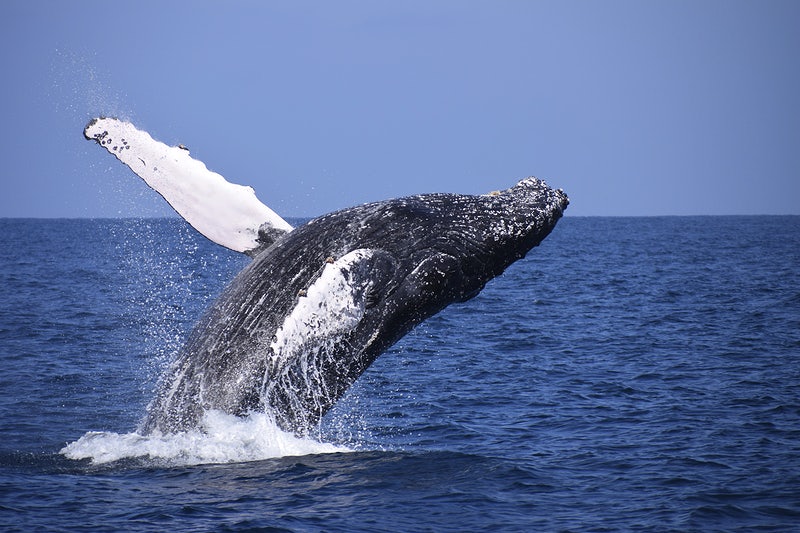
Humpback whales live in polar waters like the Antarctic Ocean. When it’s time for them to breed and give birth, they migrate to tropical waters like the Pacific Ocean.
As baleen whales, humpback whales are larger than most types of whales. They can grow up to 56 ft. long and weigh up to 44 short tons. They have a black body with white patterns on their fins and tails. Humpbacks also have bumps on their head, with one strand of hair poking out in the center.
In the 1960s, the humpback whale almost became extinct due to hunting. Fortunately, the International Whaling Commission (IWC) imposed stricter hunting rules. By 2018, humpbacks are out of danger, with a population of around 135,000.
Bryde’s Whale
Scientific Name: Balaenoptera brydei
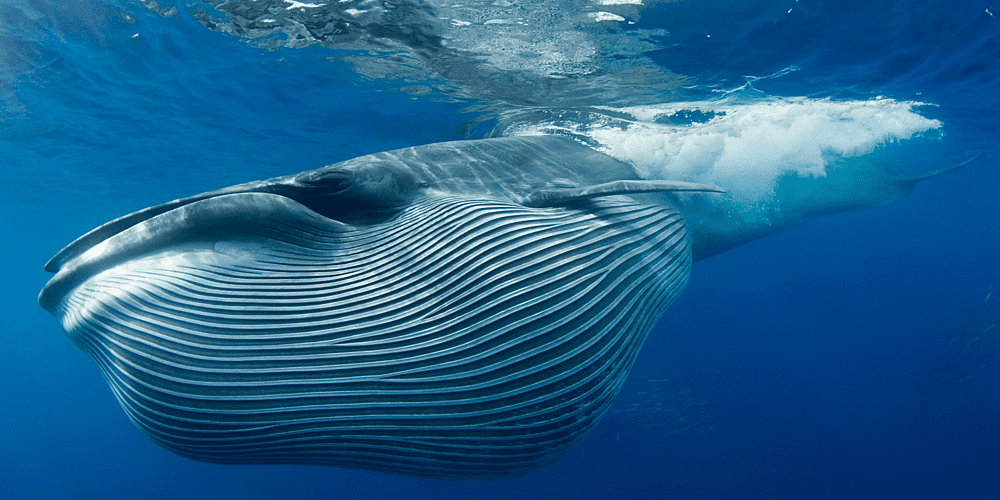
The common Bryde’s whale is a type of whale living in the Indian, Pacific, and Atlantic oceans. As a pelagic animal, the common Bryde’s whale prefers to live in the open ocean. They don’t stay close to the seafloor or the shore.
Most Bryde’s whales have very long, dark gray bodies. Like most types of whales, their color patterns can vary. However, most Bryde’s whales have white patches on their bellies and throats. They grow around 40 to 55 ft. long and can weigh up to 45 tons. They also have two blowholes on top of their heads, with a splash guard in front.
This whale gets its name from Johan Bryde, a Norwegian consul who established the first whaling station in South Africa.
Blue Whale
Scientific Name: Balaenoptera musculus

Among the different types of whales, the blue whale certainly stands out. The blue whale is the biggest whale in the world. It can grow up to 98 ft. long and weigh around 219 short tons. As their name suggests, their bodies are grayish-blue.
Blue whales can have 70 to over 300 black baleen plates on their upper jaw. Their blowholes can also squirt water up to 40 ft. in the air.
Blue whales are solitary creatures, though some might live in small groups. Before the 1990s, blue whales were abundant in nearly all the oceans of the world. Today, however, blue whales are endangered species. Whale hunting, ship strikes, and pollution led to a decline in their population.
Fin Whale
Scientific Name: Balaenoptera physalus
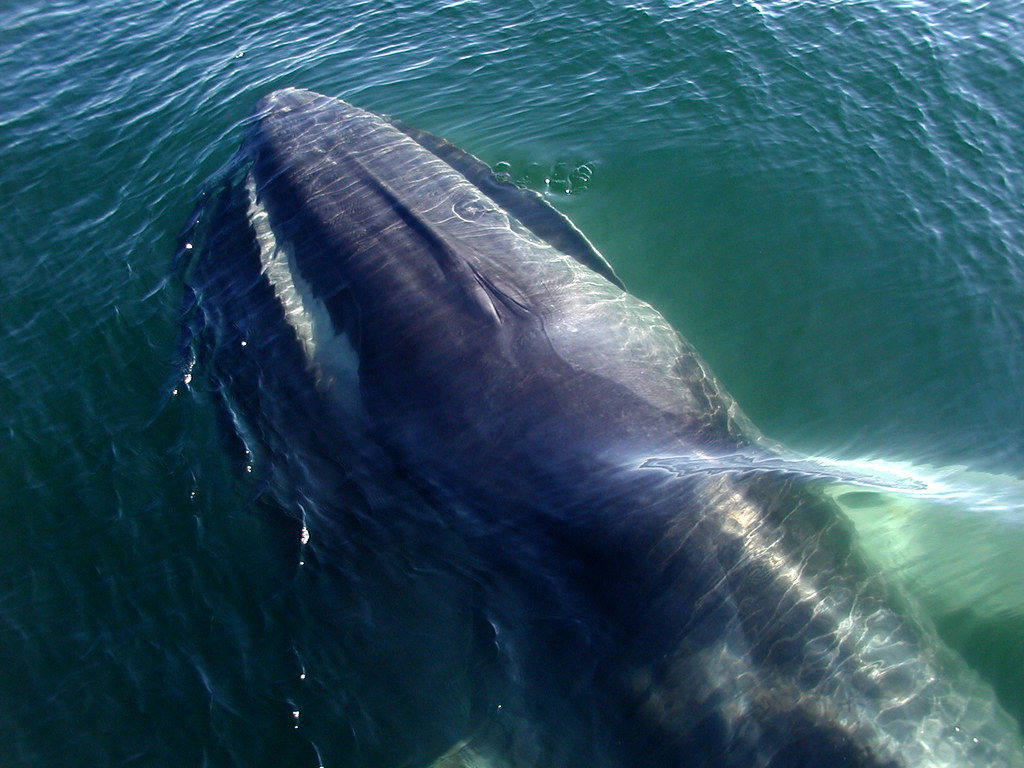
Next to the blue whale, the fin whale is the longest whale on earth. The fin whale, or sometimes “finback whale”, can grow up to 89.6 ft. long. It has a slender brownish-gray body with a lighter belly. With its impressive body length, its weight is just as hefty. This whale species can weigh up to 82 short tons.
Unfortunately, fin whales are among the types of whales that fell prey to overhunting. Their population declined in the 20th century. Today, its recovery is slow after countries like Iceland, Japan, and Greenland resumed hunting.
The Natural History Museum of Los Angeles County has a display of a fin whale skeleton. The “Fin Whale Passage” is an exhibit that showcases the skeleton of a 63-foot fin whale.
Pygmy Right Whale
Scientific Name: Caperea marginata
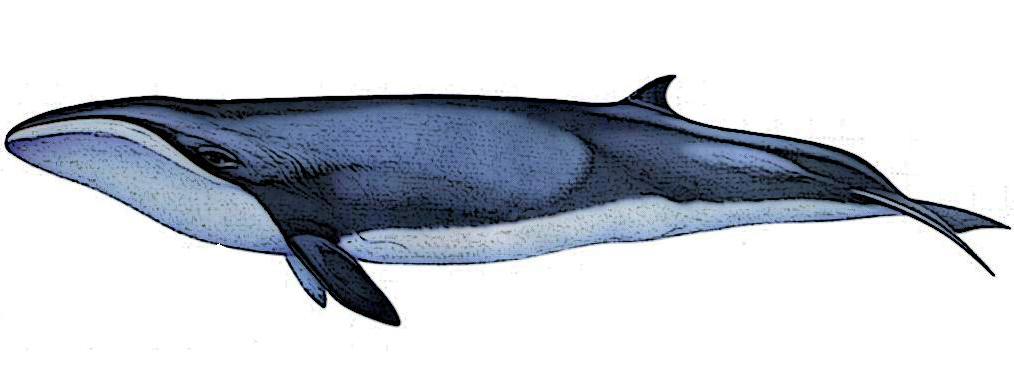
Some types of whales rarely appear on the radars of whale watchers. One example is the pygmy right whale. Pygmy right whale sightings are rare, so scientists know very little about this species. In fact, many believed they were extinct until recent sightings.
Like most whales, researchers have seen the pygmy right whales either alone or in pairs. In 2001, however, a group of 14 pygmy right whales was seen together.
Compared to other baleen whales, the pygmy right whale is the smallest. Its gray body is usually around 20 ft. long with a weight of around 6,600 to 7,700 lbs.
Gray Whale
Scientific Name: Eschrichtius robustus
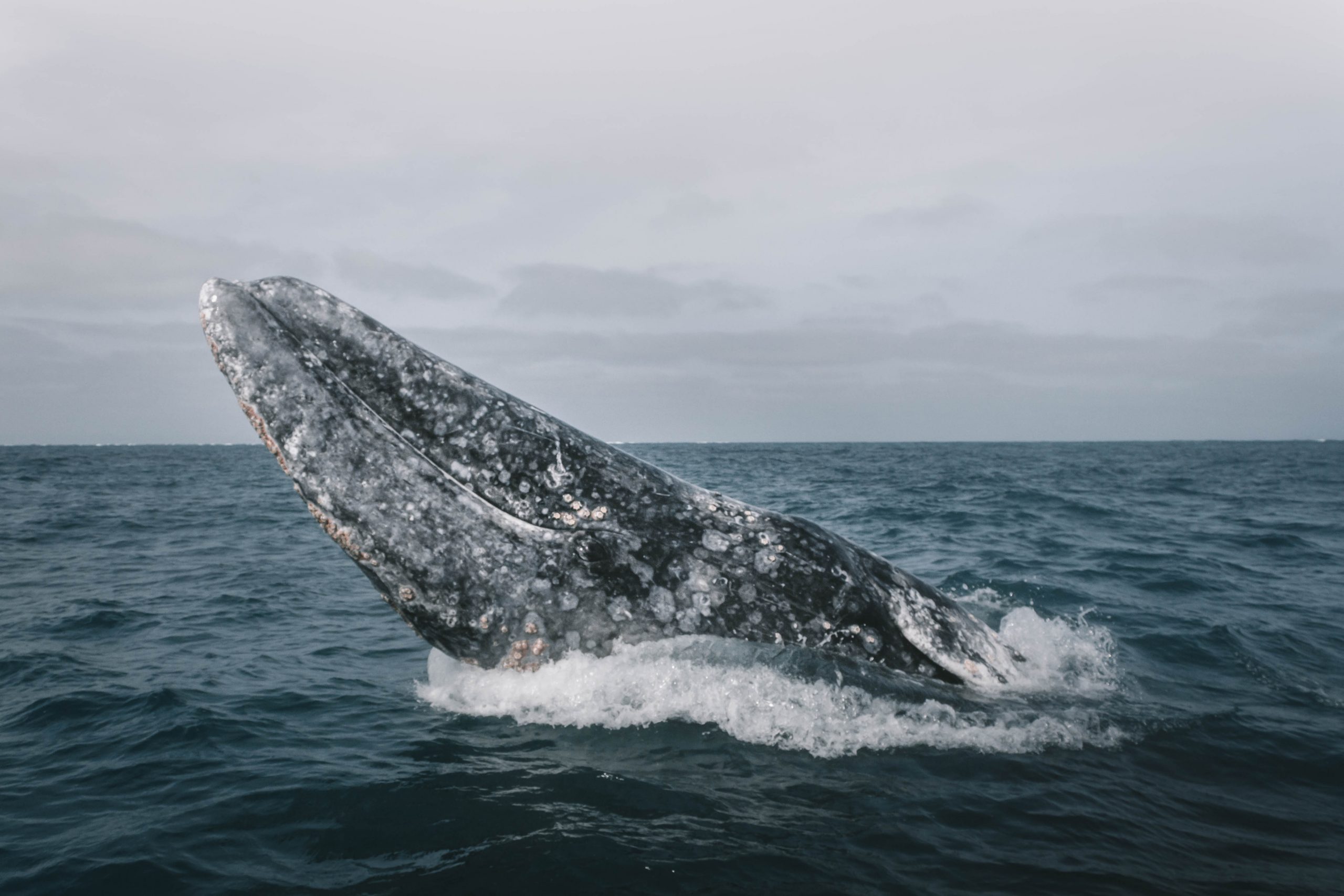
As its name suggests, the gray whale has a dark gray body with gray-white marks on its back. These marks are actually scars from parasites like barnacles that attach themselves to the gray whale’s back.
Gray whales usually measure around 43 to 49 ft. long. They can weigh a hefty 44 short tons, making them the ninth-largest whale species. Most gray whales have a lifespan of around 50 to 60 years. Some types of whales, however, can live up to 200 years old before dying of old age.
Other names for the gray whale include gray back whale, Pacific gray whale, and Korean gray whale.
Omura’s Whale
Scientific Name: Balaenoptera omurai
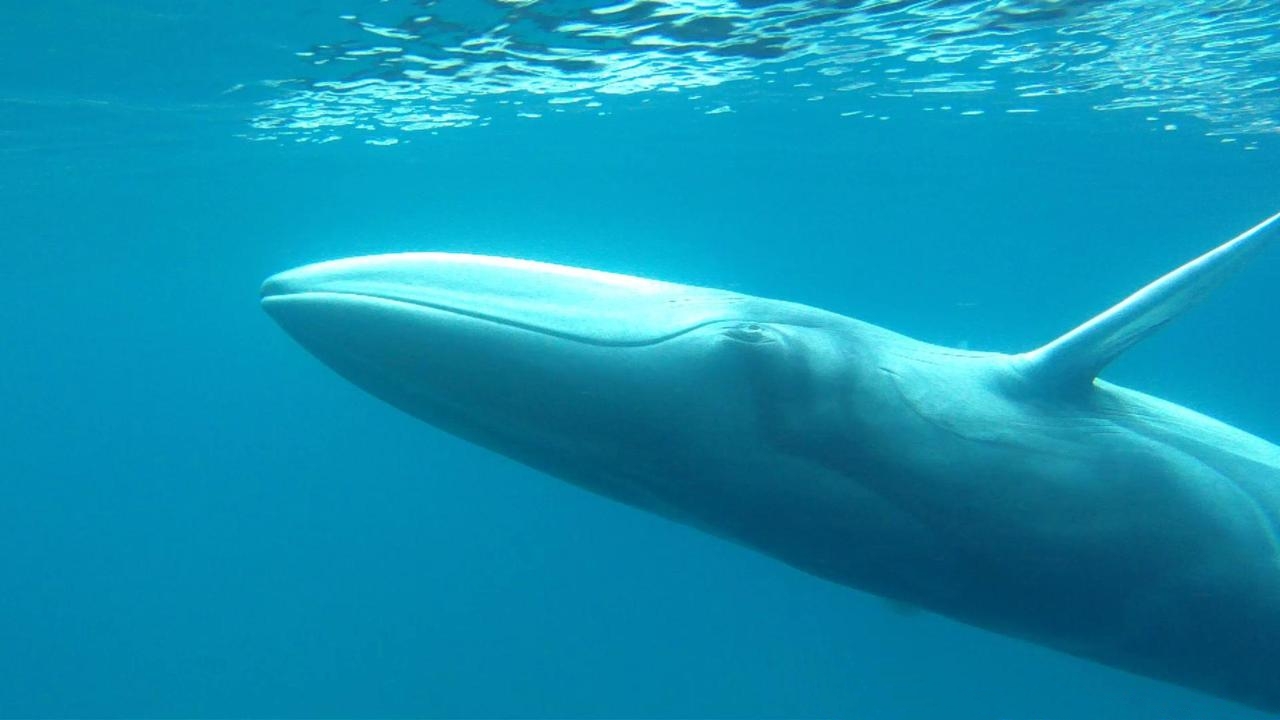
Also known as the “dwarf fin whale”, Omura’s whale resembles the fin whale from its body color and markings. It is one of the smallest types of whales, ranging from 31 to 36 ft. long.
Scientists know very little about the Omura’s whale. However, data shows they live in the Indo-Pacific and Atlantic Oceans. Recorded sightings of this whale species were in Japan, South Korea, China, and other Asian countries.
In 2003, three Japanese scientists were the first to describe the Omura’s whale. They named the new species after Hideo Omura, a Japanese scientist who worked as the director of the Institute of Cetacean Research.
Common Minke Whale
Scientific Name: Balaenoptera acutorostrata
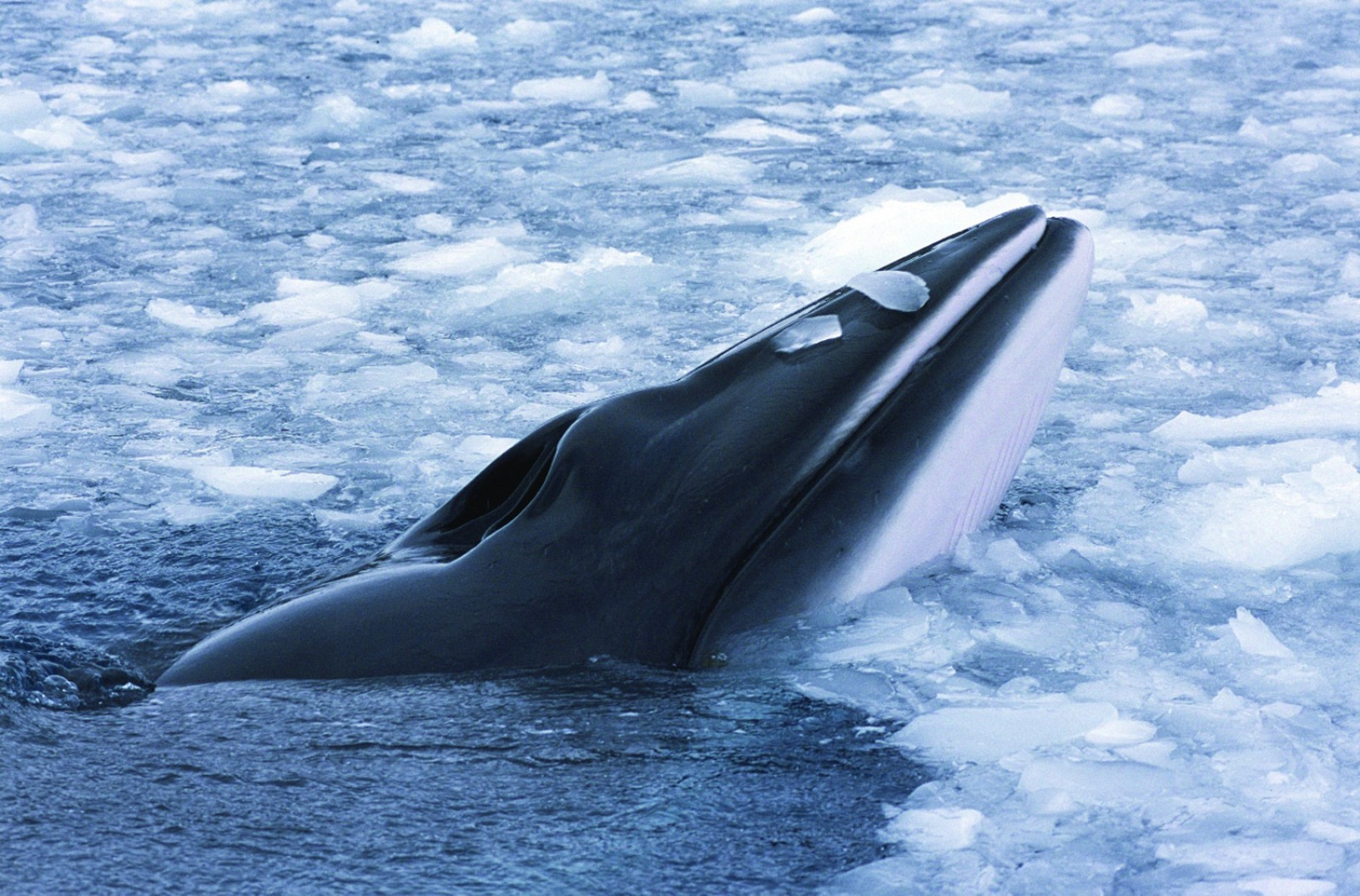
The common minke whale is smaller than Omura’s whale but bigger than the pygmy right whale. Most common minke whales measure around 30 to 33 ft. long. Despite their shorter length, however, these whales have robust bodies. Their height is around one-fifth of their body length, and their dorsal fins are around 12 in. tall.
Common minke whales have dark gray bodies with white bellies. They also have a “shoulder streak”, which is a thin, light gray stripe between their pectoral fins.
Common minke whales live in the North Atlantic and North Pacific. Some of the recorded sightings of this whale species occurred in New Jersey, Alaska, and Hawaii.
Antarctic Minke Whale
Scientific Name: Balaenoptera bonaerensis
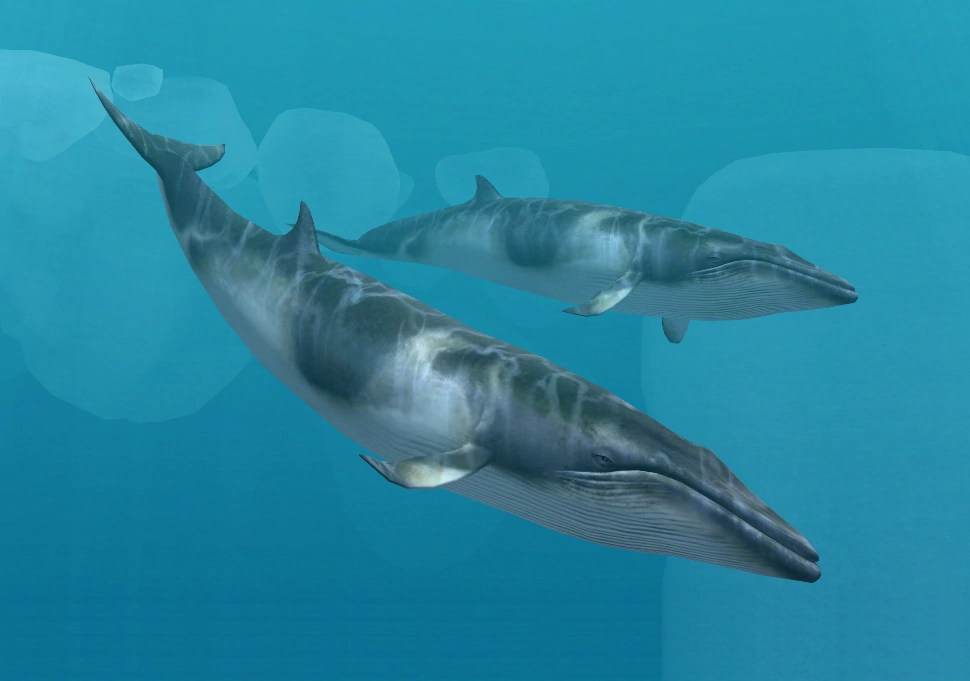
Another species of the minke whale is the Antarctic minke whale. The Antarctic minke whale is the third smallest baleen whale. It usually measures around 28 to 32 ft. long. However, the longest recorded Antarctic minke whale was 39 ft. It was an adult female caught in Brazil in 1969.
Like most types of whales, the Antarctic minke whale feeds on krills. It is rare for Antarctic minke whales to feed on anything else, but they will occasionally eat other small fish like the crocodile icefish.
Currently, the International Union for Conservation of Nature (IUCN) has listed this whale species as Near Threatened. A decline in larger whales during the 20th century led to minke whales as the next targets of whale hunters. Ship strikes have also caused a decline in their population.
North Atlantic Right Whale
Scientific Name: Eubalaena glacialis

There are three right whale species, and the first on this list is the North Atlantic right whale. North Atlantic right whales have long, black bodies. They usually measure around 43 to 52 ft. long and weigh around 44 to 77 short tons.
Unlike most types of whales, the North Atlantic right whale does not have a dorsal fin. Another distinct feature of this whale type is the callouses on their heads. Large colonies of whale lice and other parasites live in these callouses, where they feed on the whale’s skin.
Unfortunately, this whale species is critically endangered. There are only around 366 individuals in the North Atlantic Ocean. Whale hunters favored North Atlantic right whales because they yielded high amounts of whale oil. Today, however, hunting this whale species is under the protection of several conservation laws.
Other names for the Northern Atlantic right whale include the northern right whale and the black right whale.
Southern Right Whale
Scientific Name: Eubalaena australis
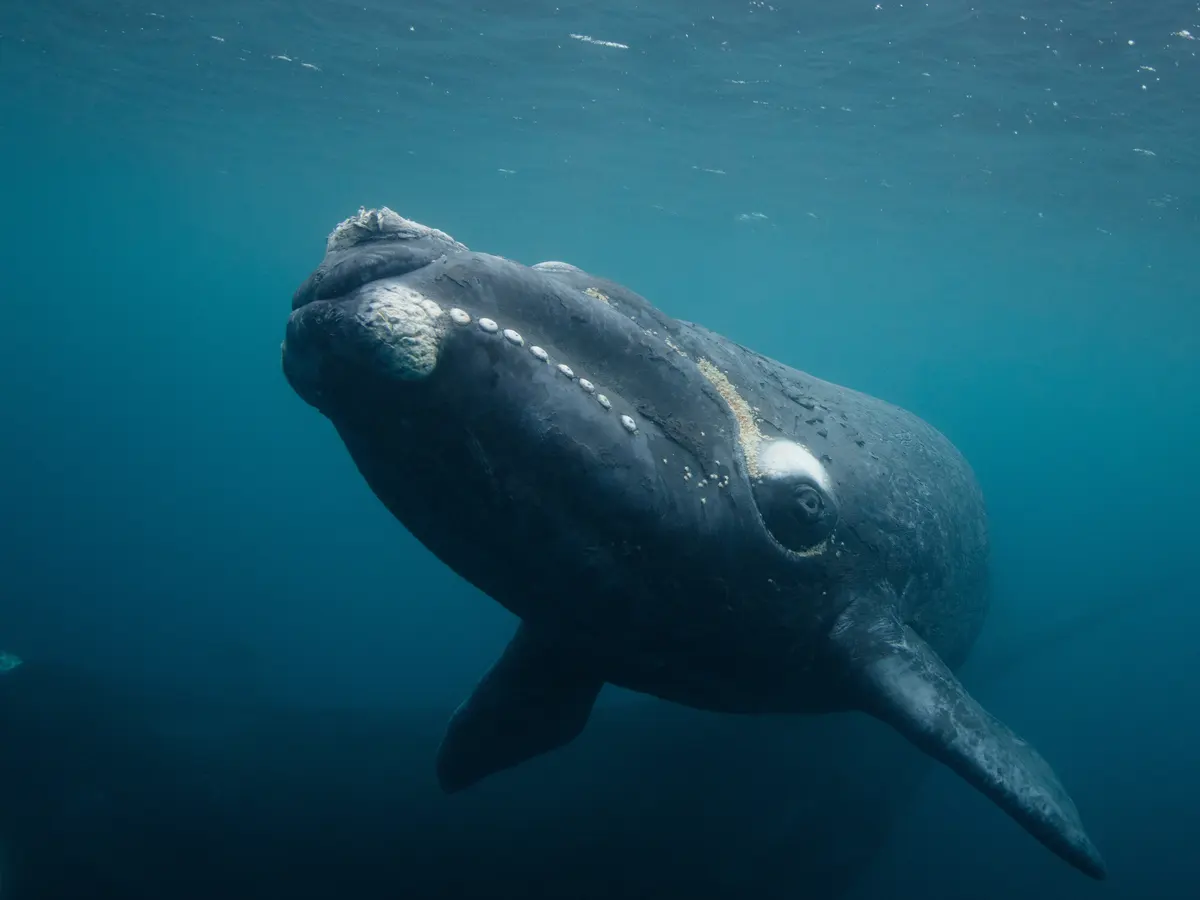
Another species of the right whale is the southern right whale. The southern right whale is a dark gray or black whale with white marks on its belly. They measure around 57 to 59 ft. long with a weight of 52 short tons.
Like the North Atlantic right whale, it does not have a dorsal fin. It also has white callouses on its head, so the two species look very similar. The southern right whale, however, has callouses on fewer callouses on its head and more on its lower lip.
With a global population of around 13,000, the southern right whale is not under threat. The majority populates the waters of Africa and South America. Some also live in the waters of New Zealand and Australia.
North Pacific Right Whale
Scientific Name: Eubalaena japonica
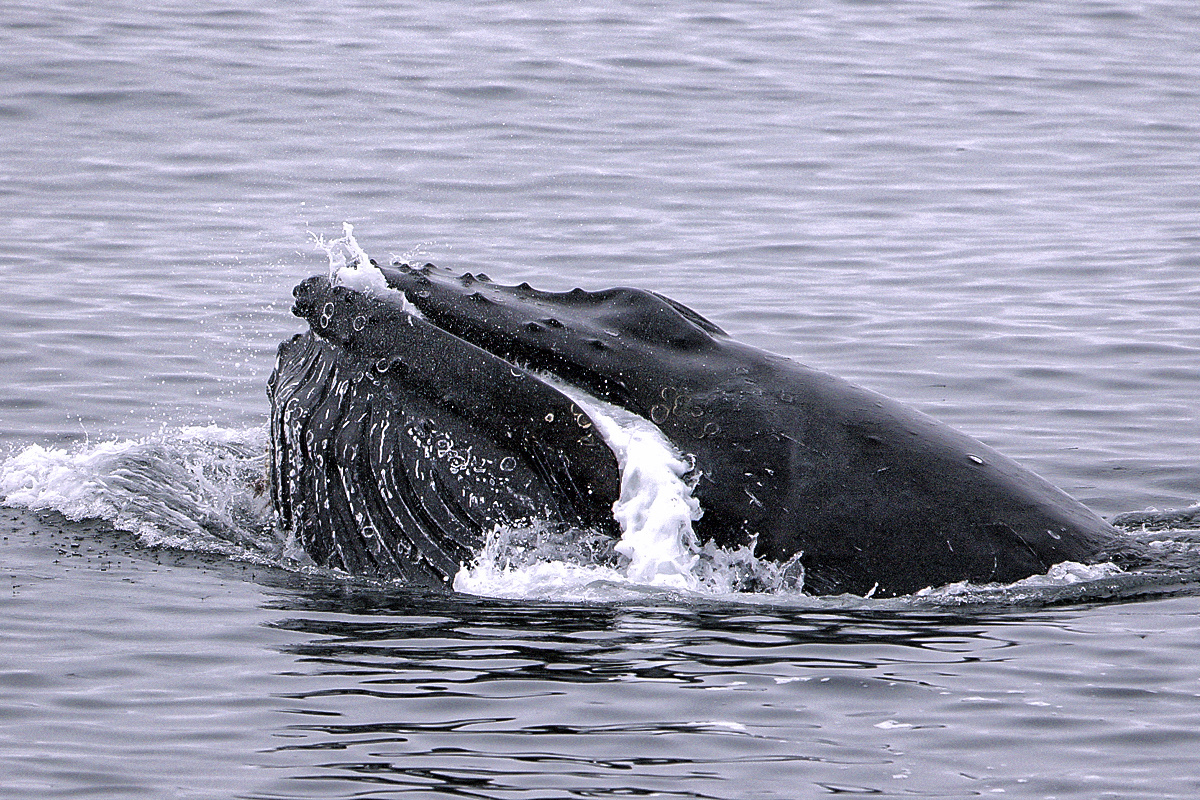
The North Pacific right whale is the last species of the right whale. It is the thickest baleen whale species. They can grow up to 449 to 60 ft. long. With a body mass of 110,000 to 180,000 lbs, they weigh twice as big as other types of whales.
The North Pacific right whale is also the rarest right whale. In fact, the Center for Biological Diversity considers the North Pacific right whale as the most endangered whale on earth.
Commercial whaling in the early 1800s caused a great decline in their population. Today, it currently has a population of around 30 whales in the eastern North Pacific and around 300 in the western North Pacific.
Sei Whale
Scientific Name: Balaenoptera borealis
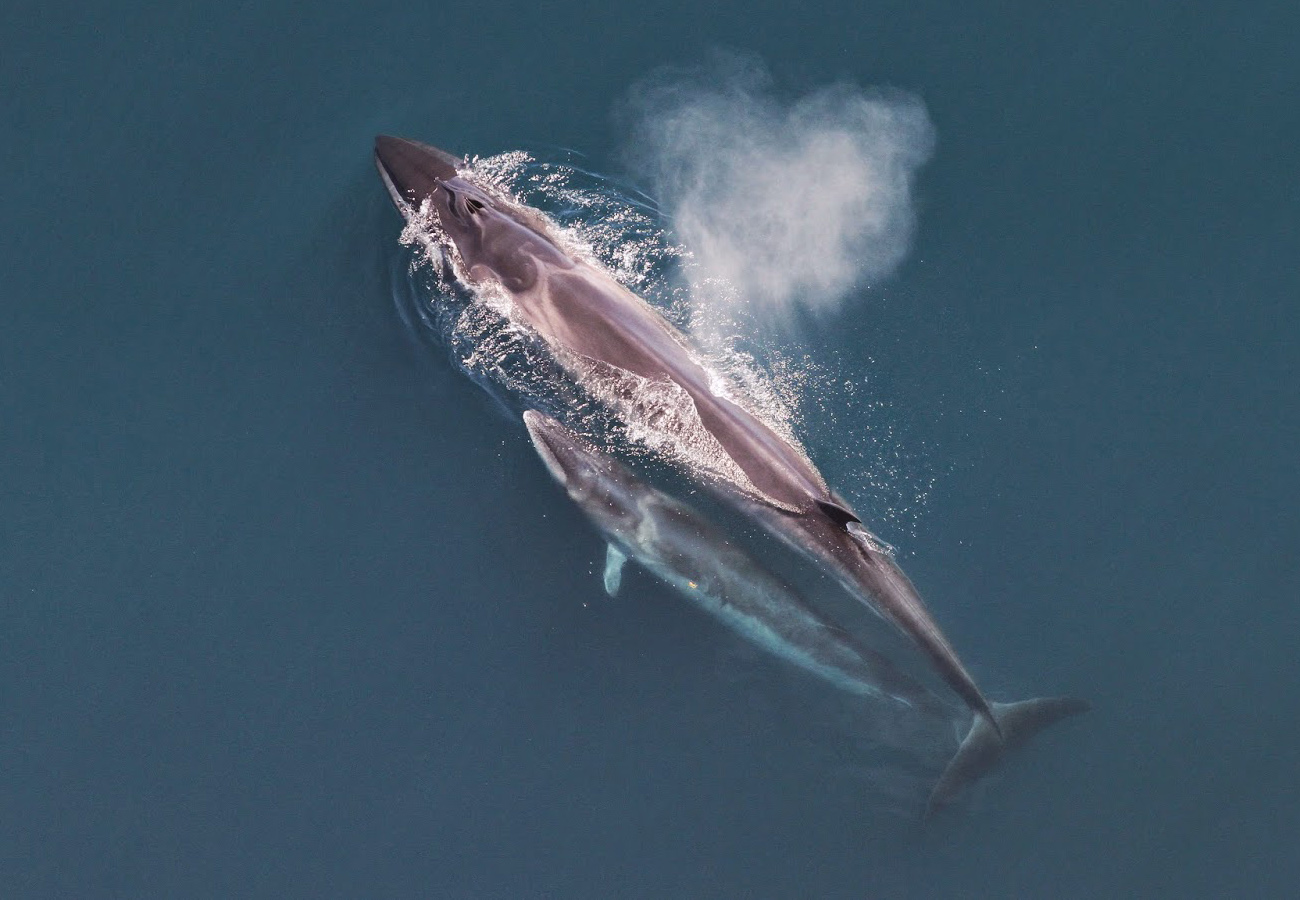
Among the different types of whales, the sei whale is the fastest. Sei whales can swim over short distances at a speed of 50 km/h. This is an impressive feat given how big sei whales are. Sei whales are some of the largest baleen whales. They can grow up to 64 ft. long and weigh around 31 short tons.
As a big whale and fast swimmer, the sei whale needs a lot of energy. It consumes around 2,000 lbs of food every day. It primarily feeds on krill and other zooplankton.
Today, the IUCN classifies the sei whale as an endangered species. Commercial whaling and endemic poisoning have decreased their numbers over the years.
Bowhead Whale
Scientific Name: Balaena mysticetus
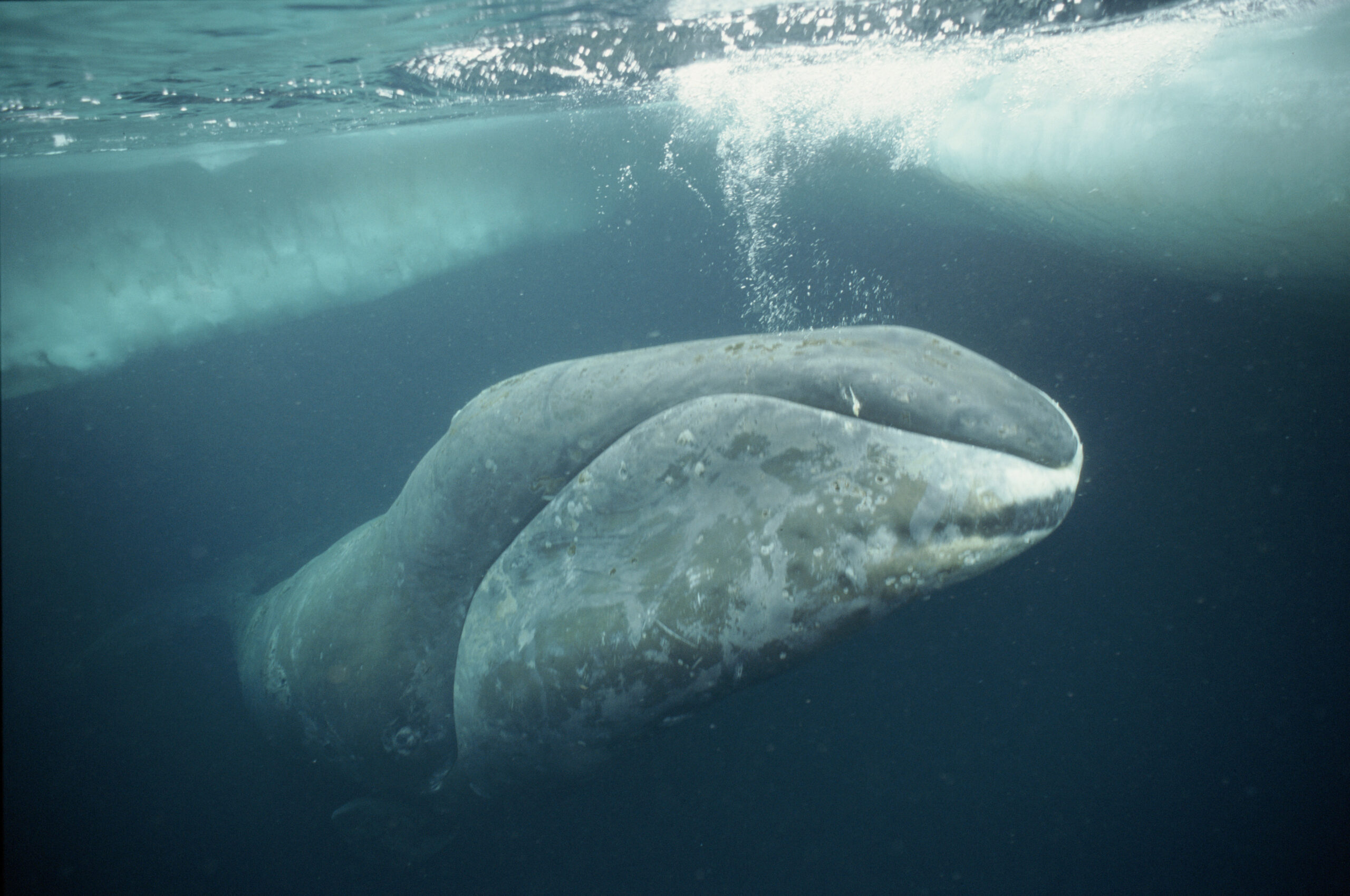
The bowhead whale is the lone species of the genus Balaena. It is also the only baleen whale endemic to the waters of the Arctic and subarctic. Unlike most types of whales, it does not migrate, and it lives in the Arctic all year long.
A distinct feature of the bowhead whale is its triangular skull. This triangular skull is not only massive but also incredibly strong. It can cut through sheets of ice as thick as 24 in. The bowhead whale has a dark gray, sometimes black, body with a white chin. Its body can measure up to 62 ft. long and weigh around 88 short tons.
Other names for the bowhead whale are Greenland right whale, Arctic whale, and polar whale.
Rice’s Whale
Scientific Name: Balaenoptera ricei
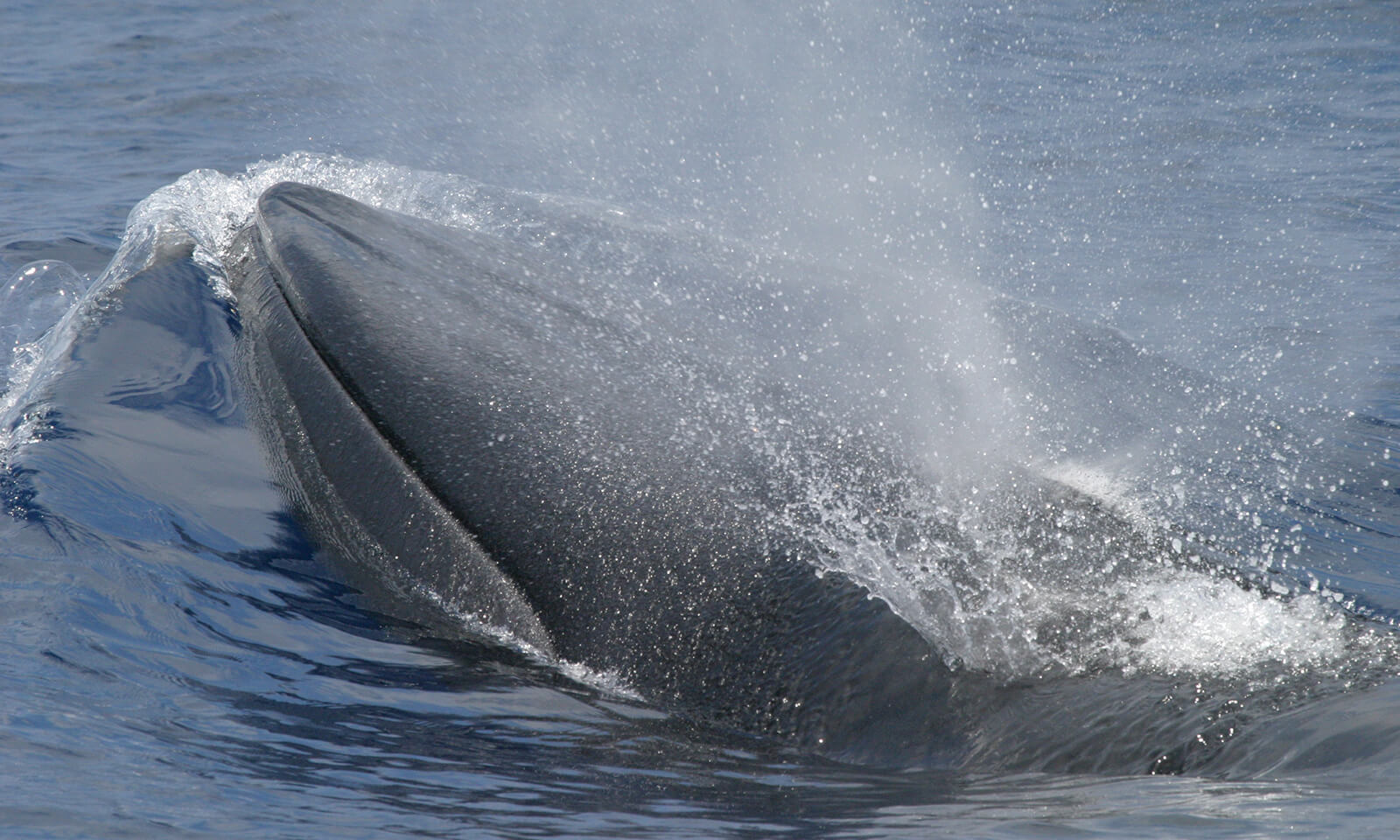
Also known as the Gulf of Mexico whale, Rice’s whale is endemic to the Gulf of Mexico. Its body can range from 23 to 41 ft. long. The Rice’s whale has a sleek, long body with a hook-shaped dorsal fin.
Rice’s whales spend most of the day diving for food. There is not much data on their diet, but they dive as deep as 889 ft. below the surface. At night, they mostly swim close to the surface.
The IUCN classifies Rice’s whale as a critically endangered species. Around 33 whales make up its population, and several factors continue to threaten their numbers. Its biggest threats are oil spills, plastic pollution, and ship strikes.
What are the different types of Toothed whales?
Sperm Whale
Scientific Name: Physeter macrocephalus
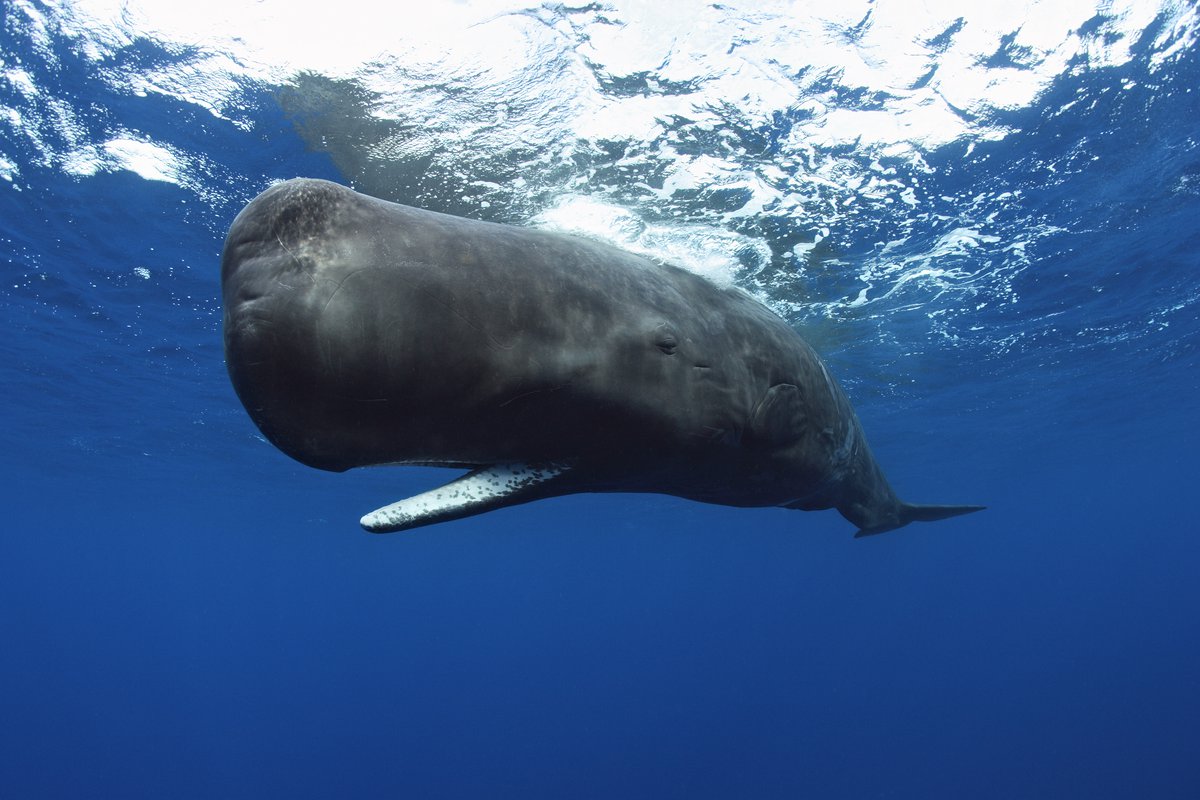
The sperm whale, or “cachalot”, is a whale you’ll find in various oceans all over the world. Like most types of whales, they migrate when feeding and breeding. Sperm whales mostly live alone, but females and calves live together.
A “social unit” refers to a group of sperm whales that live together. Social units usually stay together for years, and newcomers rarely join. Most social units have six to nine whales, but some can have more than 20 whales.
As the largest toothed whale, the sperm whale also has the largest brain on Earth. Its brain can weigh up to 20 lbs., which is almost seven times heavier than a human brain!
Orca
Scientific Name: Orcinus orca
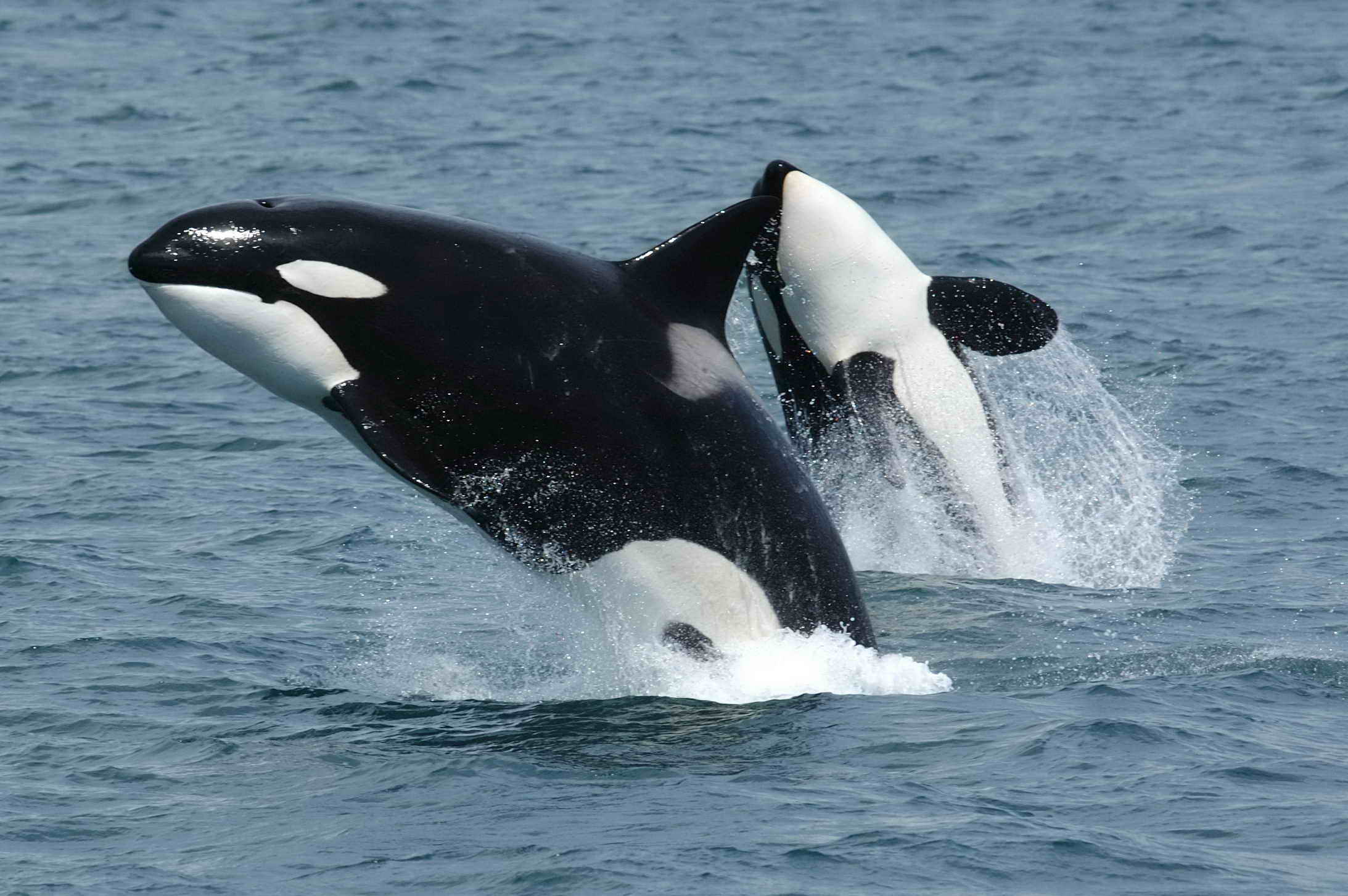
Among the different types of whales, the Orca is probably the most popular. The orca, or killer whale, is easy to distinguish with its black body, white marks on its chin and belly, and tail fluke. It also has white ovals around its eyes.
Orcas are the largest species that belong to the oceanic dolphins. Adult orcas range from 16 to 26 ft. long and weigh between 3.3 short tons and 6.6 short tons.
Some call orcas the “wolves of the sea”. Like wolves, they are apex predators that hunt in packs. These killer whales feed on fish, seabirds, and other mammals. Orcas also feed on smaller types of whales like sperm whales and gray whales.
Beluga Whale
Scientific Name: Delphinapterus leucas
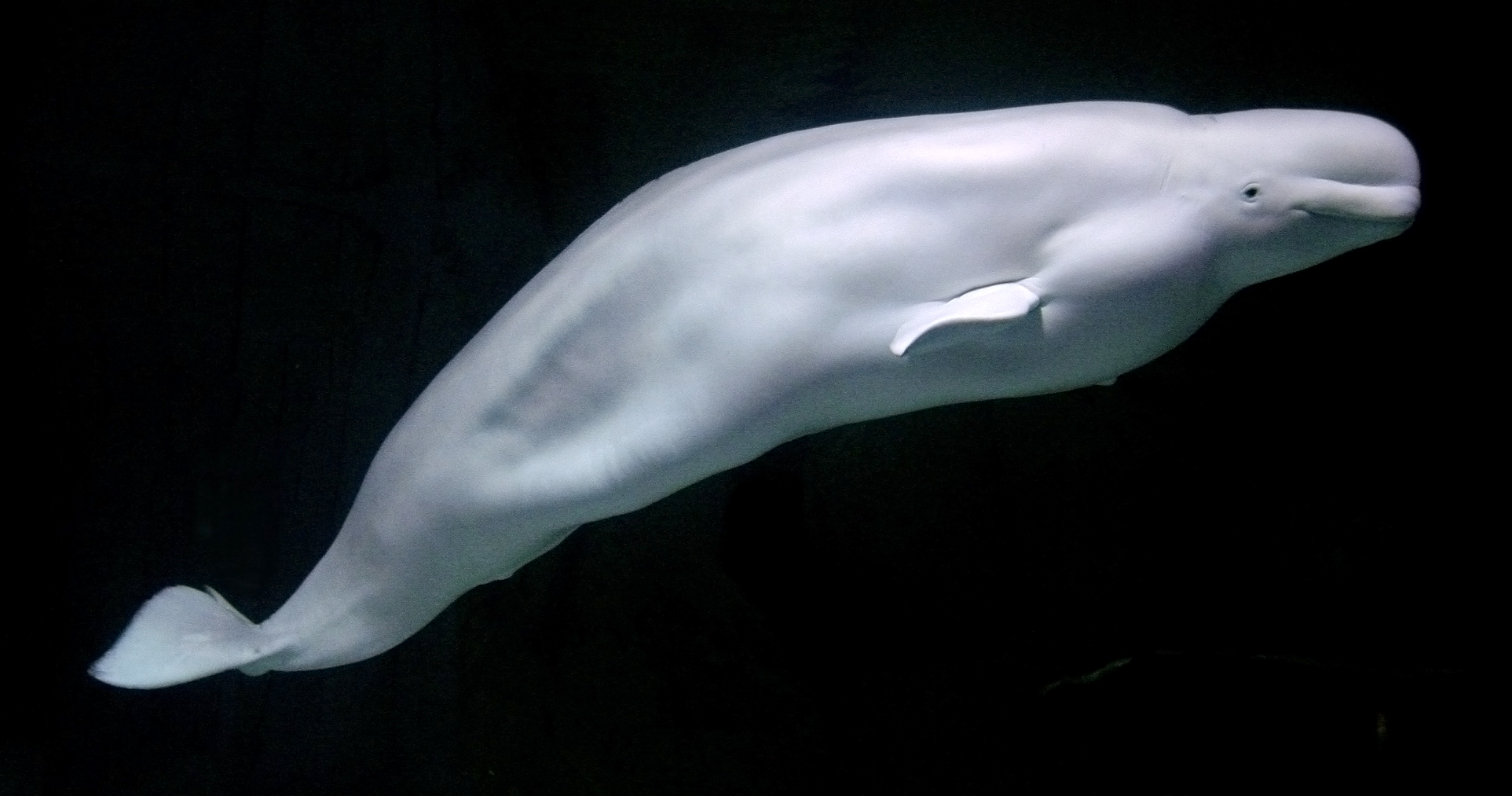
Another toothed whale is the beluga whale. The beluga whale is a whale that lives in the Arctic and sub-Arctic waters. Most of them live in the Arctic Ocean, North America, Russia, and Greenland.
Another name for this species is white whale because of its all-white body. In fact, it is the only whale species that is all-white. People also call the beluga whale “sea canary” because of its high-pitched calls. The melon-like bump on its head helps project its calls through the water.
Beluga whales are the most common whales you’ll see in aquariums. They are social creatures who often look like they are smiling.
Common Bottlenose Dolphin
Scientific Name: Tursiops truncatus
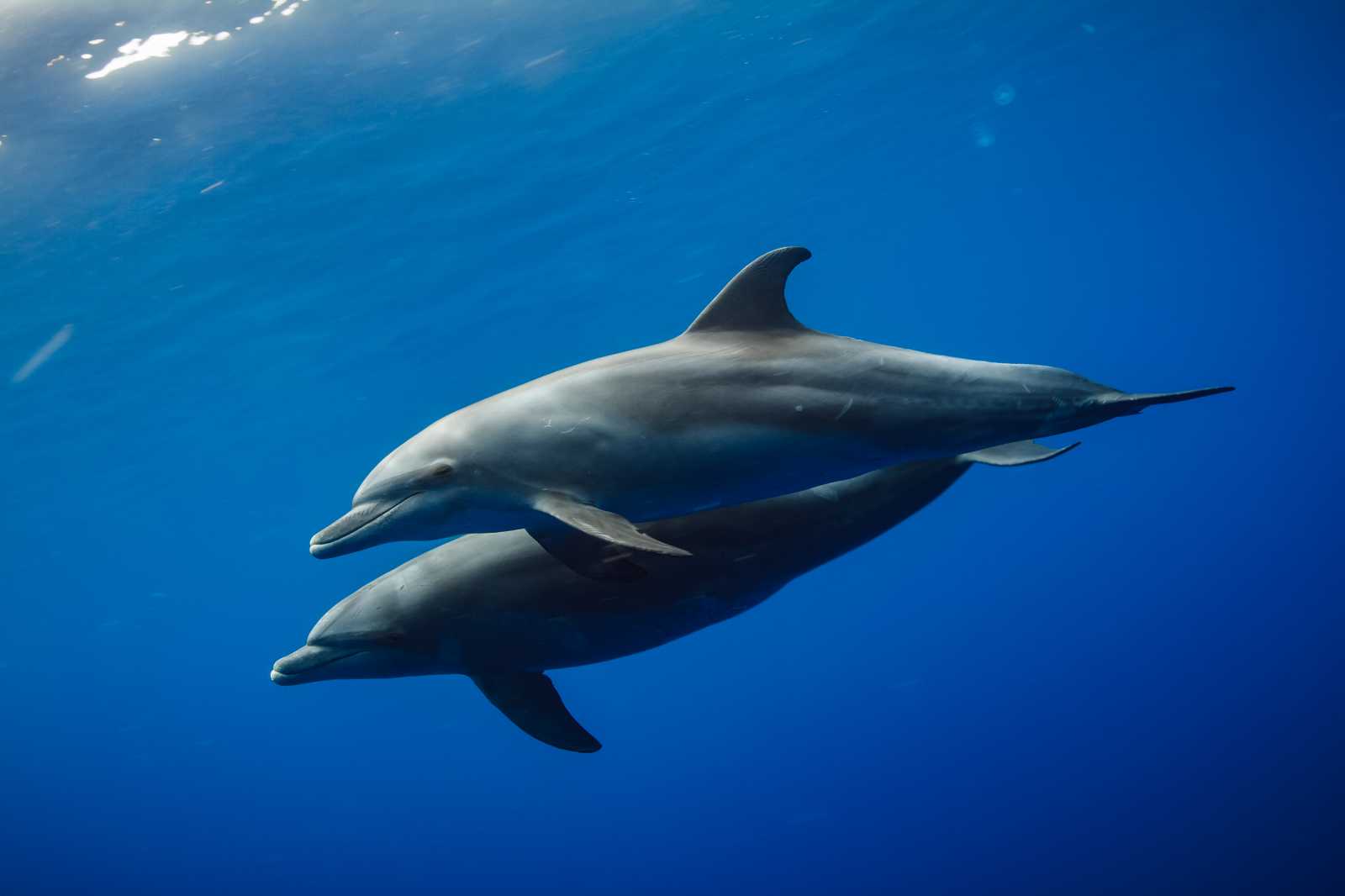
Another dolphin on this type of whales list is the common bottlenose dolphin. The common bottlenose dolphin has a long, gray body. It can range from 6.6 to 13 ft. long.
You’ll find the common bottlenose dolphin in oceans all around the world. Many live near the shore, while some live in deeper waters.
You’ll also find some of them in marine parks. In fact, common bottlenose dolphins are often part of shows where they perform tricks and interact with humans. Dolphins are also popular because of their appearances in several movies and TV shows like Flipper.
Risso’s Dolphin
Scientific Name: Grampus griseus
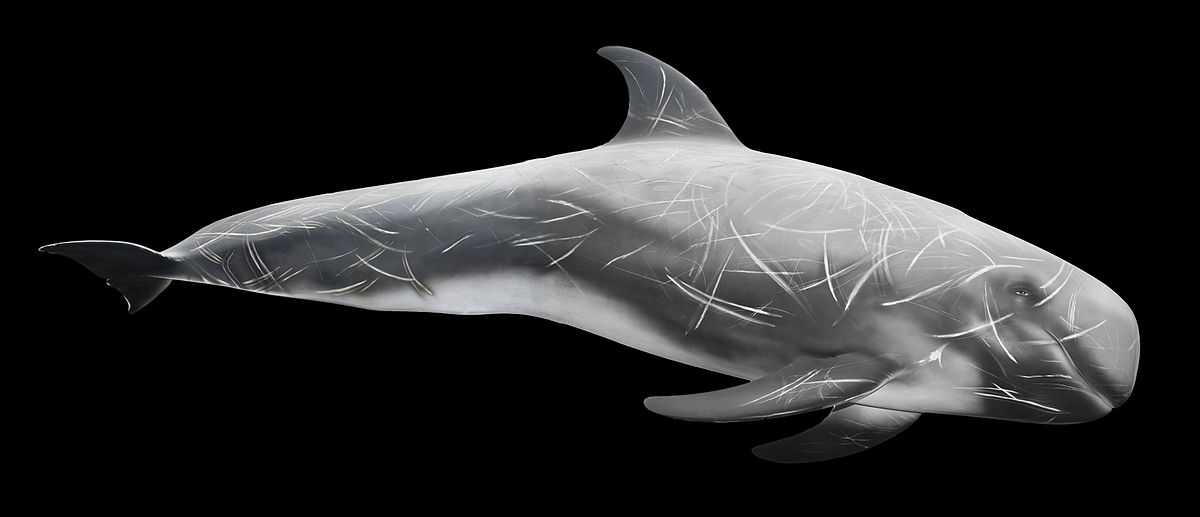
Risso’s dolphin lives in the Indian, Pacific, and Atlantic oceans, usually in the shallow and temperate areas.
They usually grow up to 10 to 13 ft. long and could weigh from 660 to 1100 lbs. Compared to other types of whales, it is quite small. However, the Risso’s dolphin is actually the largest dolphin species ever.
The species is named after Antoine Risso, whose early research on the species played a big role in its recognition years later.
Pygmy Sperm Whale
Scientific Name: Kogia breviceps
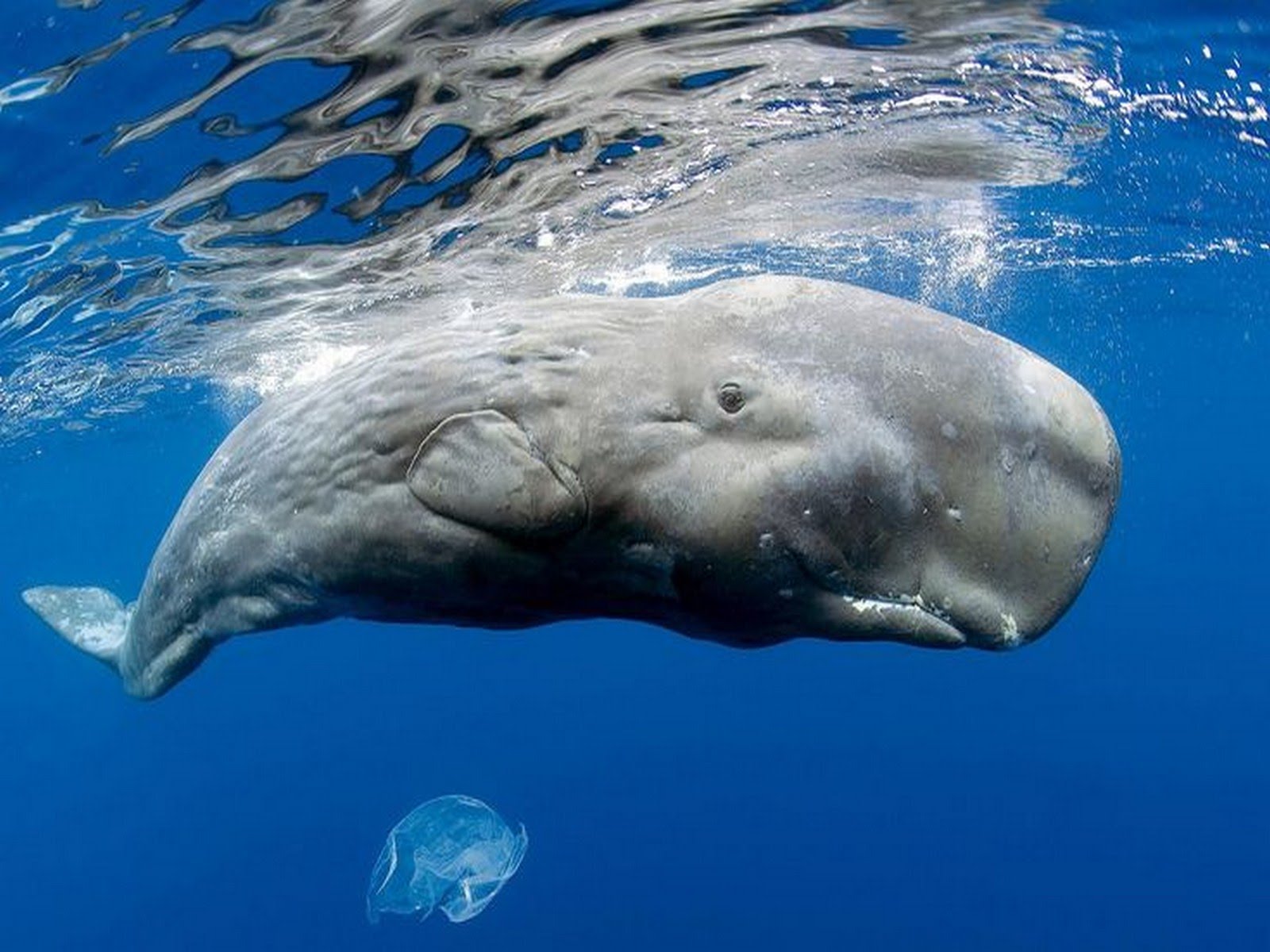
The pygmy sperm whale mostly lives in tropical waters. Scientists have no exact range of their populations as sightings of this species are rare. In fact, most of the data scientists have collected come from stranded pygmy sperm whales.
The pygmy sperm whale is among the smaller types of whales. Most only reach up to 11 ft. long and weigh around 880 lbs. It has a shark-like head, and it appears bigger than its body.
Like squids, pygmy sperm whales release “ink” to escape predators. They have sacs on their intestinal tracts, and they can release dark reddish-brown fluid to distract predators.
Narwhal Whale
Scientific Name: Monodon monoceros
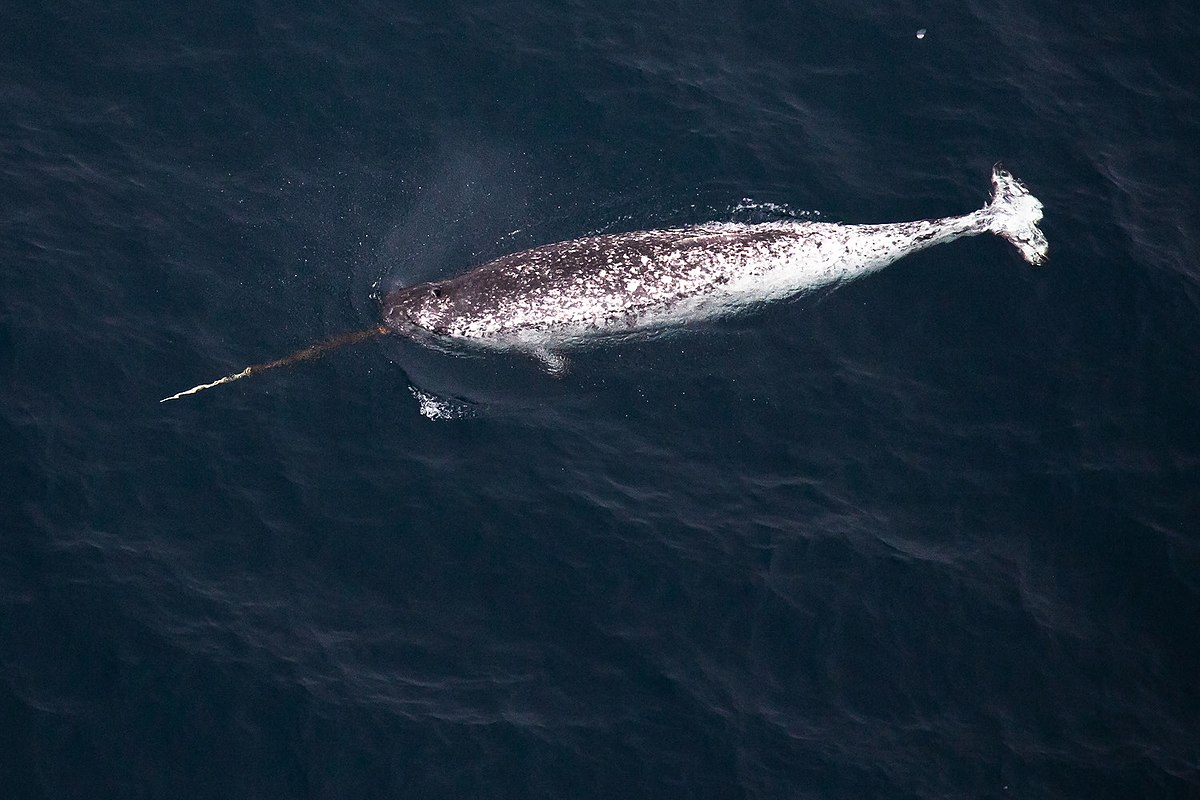
The narwhal, or “narwhale”, is a toothed whale that lives in the waters of Greenland, Canada, and Russia.
Among the different types of whales, the Narwhal stands out the most. It has a large “horn” on its head, which is why people often call them the “unicorns of the sea”. This horn is actually a tusk or a protruding canine tooth, and only male narwhals have one.
Narwhals usually range from 13 to 18 ft. long, excluding the tusk. The tusk of male narwhals can grow from 4.9 ft. to 10.2 ft. Some female narwhals can grow a tusk, while some male narwhals can have two husks. However, both cases are very rare.
Was this page helpful?
Our commitment to delivering trustworthy and engaging content is at the heart of what we do. Each fact on our site is contributed by real users like you, bringing a wealth of diverse insights and information. To ensure the highest standards of accuracy and reliability, our dedicated editors meticulously review each submission. This process guarantees that the facts we share are not only fascinating but also credible. Trust in our commitment to quality and authenticity as you explore and learn with us.
